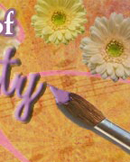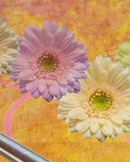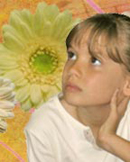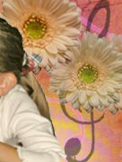Jane Piirto (1999) teaches her graduate students to find their domains of passion by focusing on the things they absolutely have to do. In order to nurture our students’ creativity we need to recognize their areas or fields of interest, then provide them with opportunities to experience that domain. A domain is the discipline in which an individual works and consists of a set of symbolic rules and procedures. For example: mathematics is a domain (algebra, number theory, calculus, etc.), art is a domain (sculptor, writer, drama/theatre, musician, etc.), and science is a domain (researcher, chemist, engineer, etc.). People within these domains decide what is accepted as a new idea or innovation to the domain. For example: the research scientist discovers a new formula for the cure for AIDS, the visual artist creates a new art form using a new material. Sometimes creativity creates a new domain. For example, the domains of science and math created a new domain called technology.
“One could say that creativity is any act, idea or product that changes an existing domain, or that transforms an existing domain into a new one.” — Csikszentmihalyi from Creativity Flow and Psychology of Discovery and Invention.
Howard Gardner describes the creative person as someone who “…regularly solves problems, fashions products, or defines new questions in a domain in a way that is initially considered novel but that ultimately becomes accepted in a particular cultural setting.”
Gifted students need their teachers to encourage them to:
- use the creative process to come up with innovative ideas
- become divergent thinkers whose end products are original, attractive, and useful
- problem solve solutions to personal, academic, and eventually social, real world issues (global warming, economics, health care, education, environment, use of natural resources, etc).
Divergent thinking is often viewed as a spontaneous way of generating ideas, however, as you will read in the Runco article, it actually requires structure and skills to maximize the outcomes.
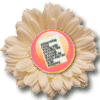 Read The Divergent Thinking of Young Children: Implications of the Research by Mark A. Runco to learn more about how divergent thinking and creativity are linked. As you read, keep in mind the four elements of creativity (flexibility, fluency, originality, and elaboration, etc.), and how they are necessary for creativity to flourish. Click on the daisy to access the article.
Read The Divergent Thinking of Young Children: Implications of the Research by Mark A. Runco to learn more about how divergent thinking and creativity are linked. As you read, keep in mind the four elements of creativity (flexibility, fluency, originality, and elaboration, etc.), and how they are necessary for creativity to flourish. Click on the daisy to access the article. Divergent Thinking Best Practices highlights suggestions and best practices that will assist you in applying divergent thinking in your classroom. Click on the daisy to access the article. When you have finished reading the article, continue with the course content.
Divergent Thinking Best Practices highlights suggestions and best practices that will assist you in applying divergent thinking in your classroom. Click on the daisy to access the article. When you have finished reading the article, continue with the course content.In Summary
As students become versed in the creative process it becomes a natural part of their everyday thought process. Creative thinking will serve them well as they are charged with solving problems at school, work, in their community, and even globally. As previously mentioned in Week 2, barriers and blocks to creativity exist. If an organization does not recognize the importance of ideas driven from all its members, innovation and creativity will not be as evident.
Problems like global warming, international trade issues, world immigration, world hunger/poverty, disease, energy development, environmental awareness/green building, health care, affordable housing, etc, require innovative ideas, divergent approaches, and creative thinking to find solutions. Who will be the innovators to address these issues? It may very well be the students we see everyday in our classrooms!
Challenges such as those mentioned are working their way into our classroom. The “No Child Left Inside Act” offers the states’ incentives to develop Environmental Literacy Plans and integrate environmental education across the K-12 curriculums. There is also support for funding for teacher training to ensure that teachers have the skills and knowledge necessary to deliver high quality environmental education. This will serve as an extension of the classroom. Visit the No Child Left Inside Act website to learn more about this act.
In this week’s reading we looked at the CPS model and how it is used to create a successful framework for managing change and nurturing creativity. Donald J. Treffinger, Scott G. Isaksen, and K. Brian Dorval adapted the CPS model to classroom instruction. Nurturing and developing creativity involves a creative classroom environment where the creative process is part of the culture of the class, where innovation is encouraged and expected, and where divergent thinking is the rule rather than the exception.



